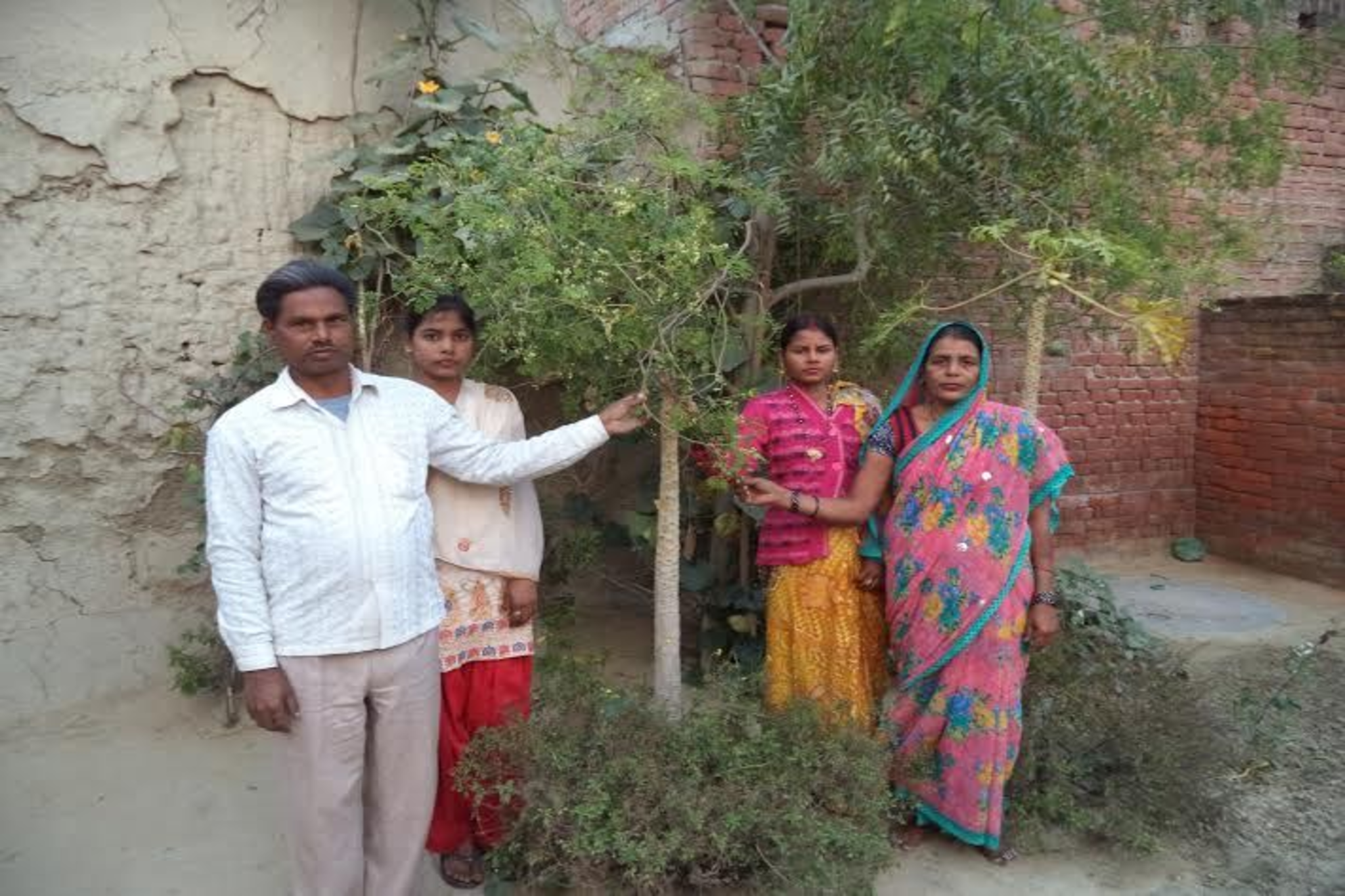Nutrition and food security through Moringa – the Miracle Tree

Ms Shubha Devi, a 38 year old resident of Chalaha village, block Bangermau, Unnao was one of the first enthusiastic users of Moringa plant. As part of her homestead garden, she planted Moringa tree using the seeds distributed by Humana People to People India in 2014. Fighting poor health, joint pain, low immunity and food insecurity, Shubha, her husband Ram Babu and their 3 children embraced the benefits of Moringa wholeheartedly.
Food insecurity, lack of access to health care and poor economic conditions, all play a major role in explaining the prevalence of under-nutrition. Most Asian regions burdened by under-nutrition also share the ability to grow and utilize an edible plant, Moringa oleifera, commonly referred to as ‘The Miracle Tree’.
The Miracle tree of Moringa was introduced to women across 25 villages in Unnao in 2012 as part of a 2.5 year project with Food and Agriculture Organization of the United Nations (FAO) and Bioversity International. The project aimed to work with farmers in Uttar Pradesh Indo-Gangetic Plain (IGP) region, to enhance Food Security in the context of Climate Change. The project aimed to support financial growth of the targeted families by mobilizing the self-help group members and focusing on improving nutrition and food security of the community.
Since the introduction of Moringa in the area, till today, many more people have become aware of the benefits of the plant. Current beneficiaries of this intervention are approximately 1300 rural women and their families. They are organized into 100 self-help groups and empowered through training to improve their family and wider community’s nutrition & food security, health, livelihoods and resilience.
Moringa’s direct impact on health and nutrition is shared through different workshops & trainings which familiarize rural households with health benefits of Moringa tree.
“The regular workshops organized by HPPI taught us about the numerous benefits of this miracle tree. The training conducted by nutritional experts taught us ways to incorporate Moringa in our daily diet through easy and economical recipes. Through steady use of Moringa I have experienced great relief in pain and inflammation of my joints and my arthritis pain. My family has experienced increased immunity and our seasonal trips to doctors have reduced exponentially. We have saved up to Rs 3000 annually on health treatment and my children have an overall better health”-says Shubha Devi.
Shubha Devi has become a passionate promoter of Moringa Plant and is a part of awareness drives in the community and among self help groups, encouraging and motivating other villagers to plant and use Moringa.
Top benefits of Moringa plant experienced by many others also include pregnant women recovering from anaemia and having babies with higher birth weights along with children maintaining or increasing their weight and improving their overall health. Just one tree per family can cover many of their dietary, nutritional and pharmacological needs and, respond partly to the humanitarian problems. Introduction of this plant is also beneficial for farmer and the surrounding eco-system.
A new Moringa plant can be grown using the branches of an existing one. This method of branch transplant is being used to ensure that all the targeted families get access to the benefits of the miracle tree in their own homestead gardens, which will help them fight food insecurity and under nourishment.
